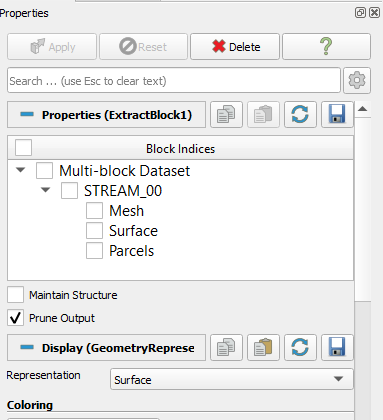

The version number, e.g., 5.6.0, will then be displayed to your terminal. To determine which version of ParaView is installed on the cluster, connect to Eagle as you normally would, load the ParaView module with module load paraview, then check the version with pvserver -version.
Paraview python filters install#
The version number that you install must identically match the version installed at NREL. This ensures client-server compatibility. It is recommended that you use the binaries provided by Kitware on your workstation matching the NREL installed version. This allows you to interact with ParaView as you normally would (i.e., locally) with all your preferences and shortcuts intact without the time consuming step of transferring data from Eagle to your desktop or relying on a remote desktop environment.

In this model, the Eagle HPC does the heavy lifting of reading file data and applying filters, taking advantage of parallel processing when possible, then "serves" the rendered data to the ParaView client running locally on your desktop.

Running ParaView interactively in client-server mode is a convenient worflow for researchers who have a large amount of remotely-stored data that they'd like to visualize using a locally-installed copy of ParaView. Using ParaView in Client-Server Mode (Eagle) # It can be run on supercomputers to analyze data sets of terascale as well as on laptops for smaller data. ParaView was developed to analyze extremely large data sets using distributed memory computing resources. The data exploration can be done interactively in 3D or programmatically using ParaView's batch processing capabilities. ParaView users can quickly build visualizations to analyze their data using qualitative and quantitative techniques. ParaView is an open-source, multi-platform data analysis and visualization application.


 0 kommentar(er)
0 kommentar(er)
